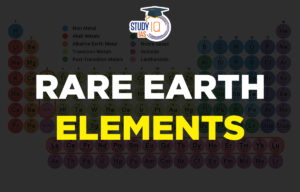Table of Contents
Context
- Earth experienced a powerful solar storm, and the Indian Space Research Organisation (ISRO) shared observations of the geomagnetic event from various perspectives, including those from its own solar mission, Aditya L1.
- Additionally, the Chandrayaan-2 orbiter detected emissions from the Sun.
About Solar Storms
- Solar storms are regular occurrences in the Sun’s solar cycle (11-year cycle).
- They involve the Sun emitting massive bursts in the form of solar flares and coronal mass ejections (CMEs), releasing light, energy, and solar material into space.

Impact of Solar Storms on Earth
- Solar storms can reach Earth with varying intensities.
- The energy from the Sun can create bright lights in the sky known as auroras, including the northern lights.
- Solar storms can cause various disruptions on Earth, including:
- Disruption of satellites: Solar storms can interfere with satellite operations, affecting communication and navigation systems.
- Disruption of electronic devices: Electronic devices like phones and GPS systems can be affected by solar flares.
- Radio communication interference: Powerful solar flares can disrupt radio communications over large areas.
- Power outages: Intense geomagnetic storms can cause widespread blackouts, as seen in Quebec in 1989.
- Interference with infrastructure: Solar eruptions can interfere with critical infrastructure like railway signalling and telegraph lines, as experienced in 1859.
Solar Flares
- Solar flares are electromagnetic radiation that travels from the Sun at the speed of light, reaching Earth in just over eight minutes.
- They often occur alongside coronal mass ejections.
Coronal Mass Ejections (CMEs)
- CMEs are large bursts of charged energy that explode from the Sun, travelling at millions of miles per hour.
- While fast, they are not as quick as solar flares.
Causes and Effects of Aurorae
- Aurorae are caused by violent solar events ejecting charged particles into space.
- These particles get trapped in Earth’s magnetic field and interact with the upper atmosphere, creating aurorae.
- Earth’s magnetic field deflects most charged particles, but some slip through near the poles, creating red, green, and purple aurorae.

- These storms, occurring once every few decades, can trigger blackouts, disrupt satellites, and endanger astronauts.
- The last significant event was in 2003.
- Recently, vivid aurorae were visible globally, even in places like Hanle in Ladakh, where they are uncommon.


 Rare Earth Elements, Metals, Magnets, Ap...
Rare Earth Elements, Metals, Magnets, Ap...
 Places in News for UPSC 2025 for Prelims...
Places in News for UPSC 2025 for Prelims...
 Indian Continental Plate is Splitting Ap...
Indian Continental Plate is Splitting Ap...





















